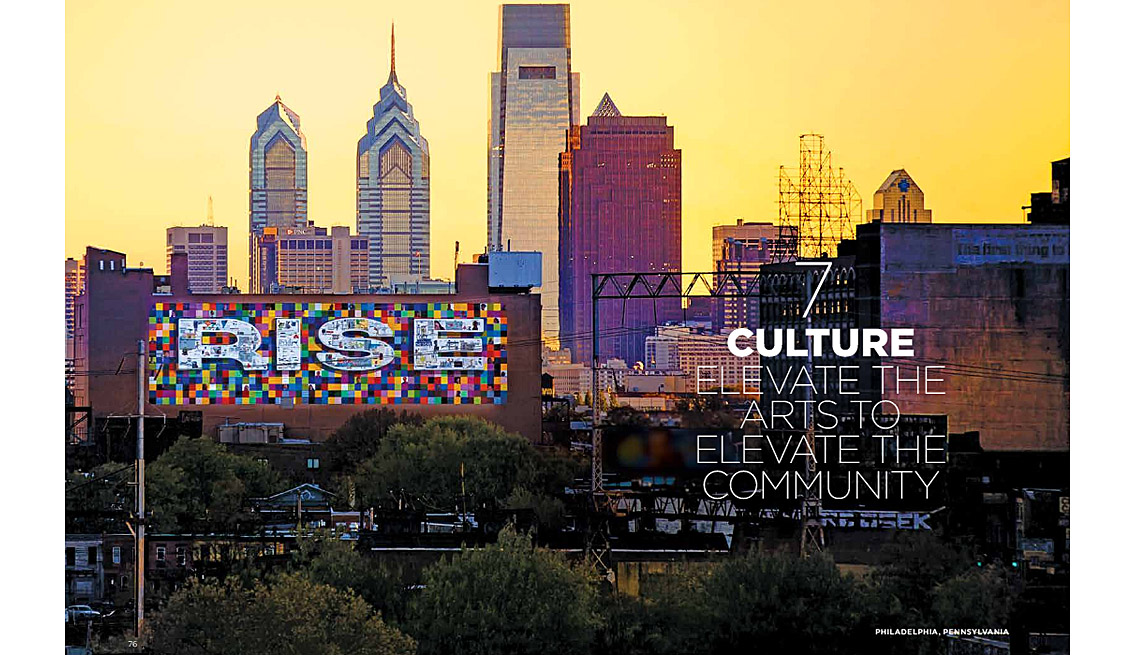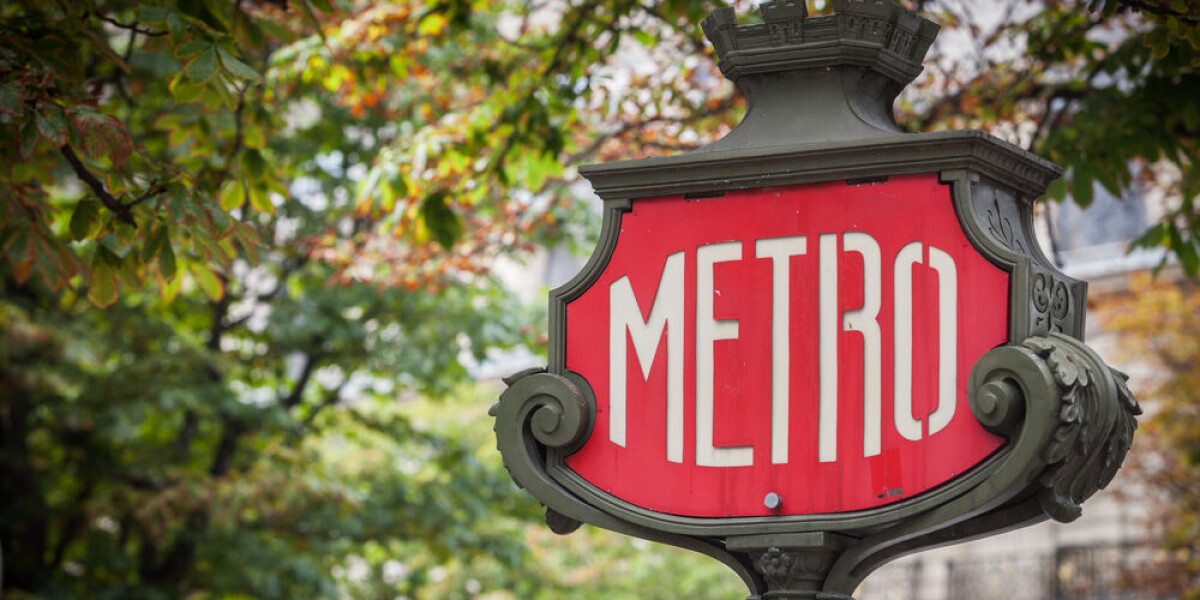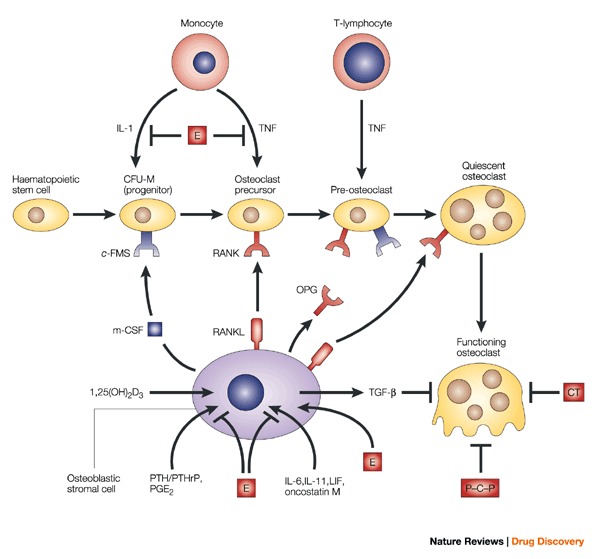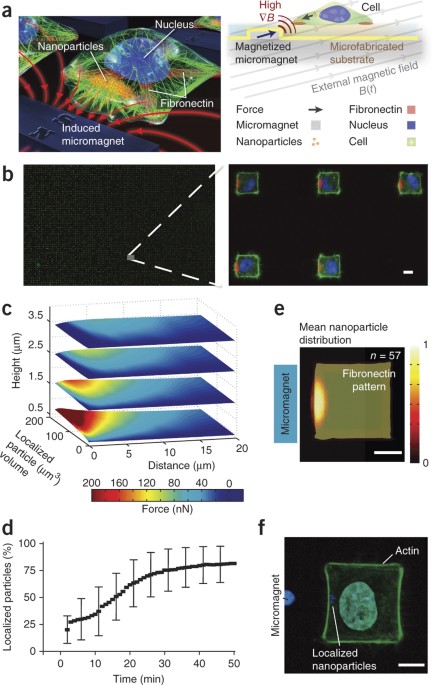
- Select a language for the TTS:
- UK English Female
- UK English Male
- US English Female
- US English Male
- Australian Female
- Australian Male
- Language selected: (auto detect) - EN
Play all audios:
_THIS ARTICLE IS ADAPTED FROM WHERE WE LIVE: COMMUNITIES FOR ALL AGES, A FREE BOOKAZINE PUBLISHED BY AARP IN 2016._ Public art installations, arts education in schools, exposure to music,
dance, theater and the visual arts: Culture in our communities fosters creativity and enhances recreational opportunities for citizens of all ages. Expanding access to cultural offerings
creates a more vibrant, interesting community for local residents — whether it's taking a painting or dance class, watching a play, listening to a concert or enjoying a new sculpture
in a public park. Public art also gives communities a sense of place, making them destinations where people of all ages want to stop for a moment rather than rush through on their way to a
meeting, a job or an appointment. Taken together, investments in the arts can help increase social engagement and creativity among residents of all ages. HERE'S WHAT MAYORS HAVE BEEN
DOING SALEM, MASSACHUSETTS * MAYOR KIM DRISCOLL: _PUBLIC ART MASTER PLAN_ Muralist Ruben Ubiera, working in Salem, Massachusetts, and Mayor Kim Driscoll, as seen in the Culture chapter of
"Where We Live." Photo by John Edwards/Creative Salem Cities don't happen by accident. They take careful, thoughtful planning and a pro active approach," says Mayor Kim
Driscoll. "For our city to thrive, we have to plan the work and work the plan." This analytical, nose-to-the-grindstone philosophy is a hallmark of Driscoll's approach. So
when community feedback identified public art as an important component to revitalize Salem's Essex Street pedestrian mall, Driscoll put the pieces in place to "plan the
work." The Public Art Master Plan is a blueprint for how the city will incorporate art into the planning and development process for Essex Street and beyond. As home to the Peabody
Essex Museum, numerous cultural organizations and several public arts festivals, Salem already had a strong history of supporting the arts. The Master Plan builds on this foundation, helping
the city manage growth of its art initiatives and solidifying Salem's identity as a regional hub for culture and creativity. To cultivate ongoing community support, developers of the
master plan engaged local organizations and a working group of residents, arts professionals and other stakeholders. Two community workshops were held to solicit input and feedback on the
plan's recommendations. Unveiled in 2013, the final plan is comprehensive and action-oriented, with recommendations ranging from administrative — such as how to structure
solicitations, select art projects and manage the city's art collection — to substantive, including recommendations for public art sites and criteria for each potential installation.
Driscoll has moved quickly to put the plan's ideas into action with the appointment of a public arts planner and seven-member Public Art Commission. CARMEL, INDIANA * MAYOR JIM
BRAINARD: _ARTS & DESIGN DISTRICT_ Arts and culture are no longer just for urban areas. That's the thinking behind Mayor Jim Brainard's move to create an Arts & Design
District and new City Center in Carmel's suburban downtown. Working in collaboration with community leaders and investors, Brainard created public and private grant partnerships to
generate funding for new theaters, public spaces, galleries and more. The emphasis on artistic offerings simultaneously spurred economic growth, increasing tourism and creating a hub that
gives residents of all ages new opportunities for social and cultural activity COLUMBUS, OHIO * MAYOR MICHAEL B. COLEMAN: _ARTS CLASSIFIEDS_ For more than a decade, Mayor Michael Coleman has
cultivated a vibrant arts and culture scene in Columbus. In partnership with local organizations, the city's digital database of arts programs, ARTS CLASSifieds, allows residents to
quickly find arts education classes and activities offered by more than 300 different providers. A follow-up initiative created a grant program that funds public art projects. Taken
together, Columbus's focus on the arts is designed to build community spirit and bring about a culture of creativity that benefits residents of all ages. GARY, INDIANA * MAYOR KAREN
FREEMAN-WILSON: _ARTHOUSE: A SOCIAL KITCHEN_ "I believe that public art — combined with design, community engagement and private and government investment — can transform the way we
imagine a city," says Mayor Karen Freeman-Wilson. This vision is becoming reality with the ArtHouse project that's transforming an underutilized 15,000-square-foot building into a
cultural center showcasing visual and culinary arts. Funded in part by a grant from the Bloomberg Philanthropies' Public Art Challenge, the city is partnering with artist Theaster
Gates to develop creative design solutions for the building. When completed, ArtHouse will feature three commissioned works of visual art and serve as a hub for cultural programs and
culinary arts training. Freeman-Wilson hopes that in the long-term, the new public space will kick-start additional economic development in the downtown area. LOVELAND, COLORADO * MAYOR
CECIL A. GUTIERREZ and FORMER MAYOR RAY REED: _ART IN PUBLIC PLACES_ Through successful public-private partnerships and generous donations, artwork is now embedded in the Loveland community
through creatively designed benches, bike racks, bridges and landscaping that enhance the lives of all residents. In 1985, during then-Mayor Ray Reed's term, Loveland became the first
Colorado city to pass an Art in Public Places Ordinance, designating one percent of the city's capital investment budget to purchase and maintain art installations. Local leaders and
sculptors came together to create the Loveland High Plains Arts Council — and later the Visual Arts Commission — to showcase neighborhood artists, promote local foundries and organize
festivals and parks that engage the community. Subsequent mayors continued to nurture Loveland's love of public art. In 2015, when the Art in Public Places program celebrated its 30th
anniversary, Mayor Cecil A. Gutierrez could boast that his city was home to 465 sculptures and 2-D pieces. PHILADELPHIA, PENNSYLVANIA * Former Mayor W. Wilson Good: _Mural Arts _
Philadelphia's Mural Arts Program — featuring several thousand works of public art — has generated high-profile new public artwork for decades. Begun in 1984 as the Philadelphia
Anti-Graffiti Network by then-Mayor W. Wilson Goode, the program started as an innovative way to curb the problem of rampant graffiti. Jane Golden, a young artist hired by Goode, built
relationships with graffiti artists and channeled their creativity toward planning public art projects instead of defacing public and private property. The first mural project, which covered
both sides of a pedestrian bridge linking West Philly to Center City, was completed in 1985. Today, financed by a combination of public and private funds, the program has expanded under
Golden's continued leadership into an organization that includes youth art education and re-entry programs along with a dedicated community murals department that focuses on public
projects in partnership with community organizations. SUWANEE, GEORGIA * MAYOR JIMMY BURNETTE: _SUWANEE SCULPTOUR_ Jimmy Burnette is supporting the arts in his city through the annual
Suwanee SculpTour, a series of original outdoor sculptures displayed downtown. SculpTour offers the community an affordable and family-friendly way to incorporate art into daily life,
encouraging residents and visitors to explore the small city (population 16,000) by viewing the installations along a one-mile walking tour. In partnership with local artists and private
sponsors, Burnette is helping create beautiful, communal public spaces for neighbors to spend more time outside while encouraging economic activity in downtown restaurants and shops. When
the temporary exhibits end, the city works to add at least one SculpTour piece to its permanent art collection. _Page published June 2016_ THE TAKEAWAYS * PUBLIC ART AND CULTURAL CENTERS
ENHANCE COMMUNITIES: Across the country, mayors are using the arts to enliven their communities and create new destinations for community events. * IT'S NEVER TOO EARLY — OR LATE — TO
GET ENGAGED IN THE ARTS: Arts programs in schools foster creativity and an appreciation for culture at an early age. But learning and exploring the arts shouldn't stop with graduation.
Residents of all ages benefit from access to classes, exhibits and events. More from AARP.org/Livable Use the dropdown to choose a livability topic. Select a Subject







